Pulikachal / tamarind rice paste – A zesty South Indian condiment bursting with tangy tamarind and aromatic spices! Learn how to make tamarind rice paste with detailed step-wise pictures. Enjoy the flavorsome journey of making and relishing this traditional South Indian delicacy!
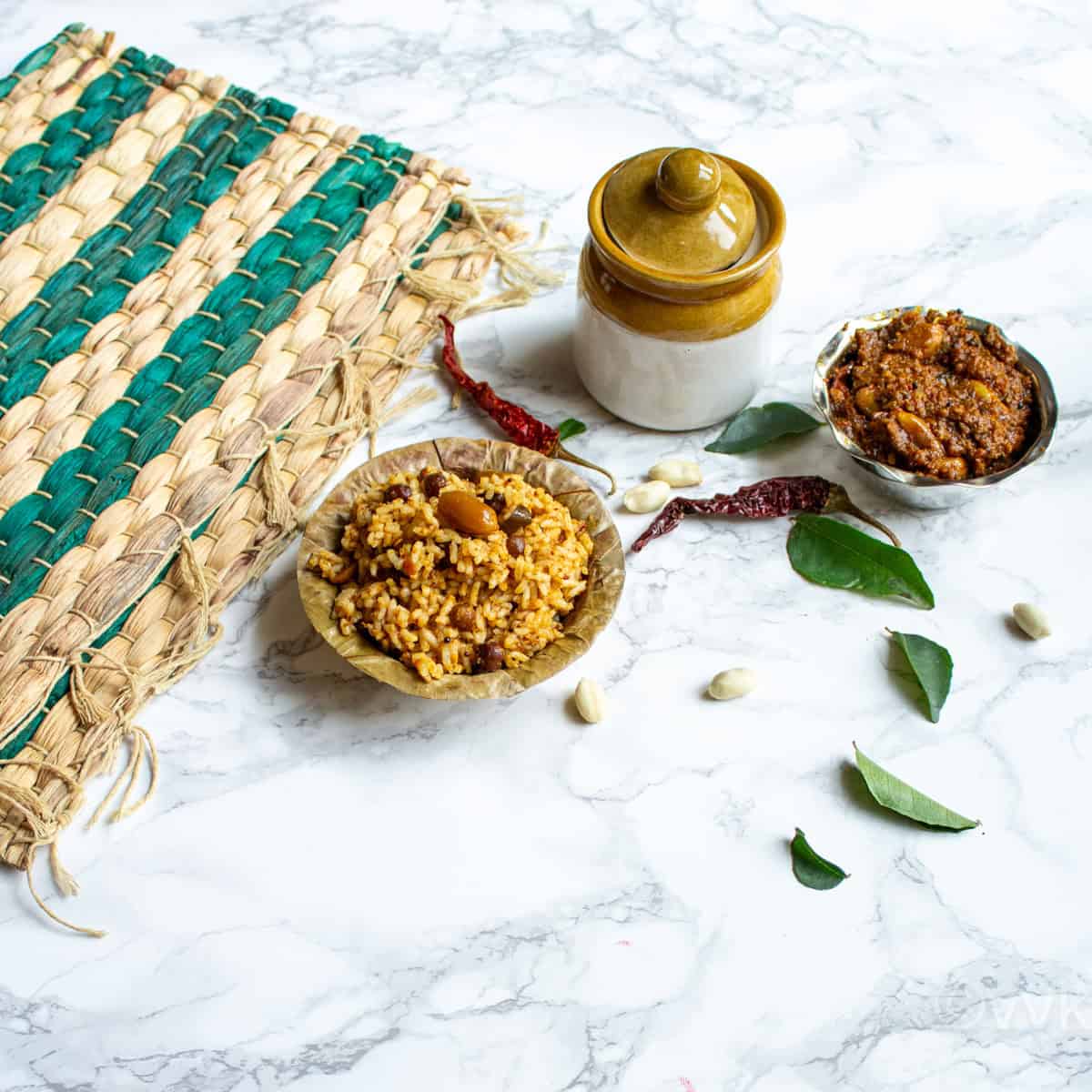
Jump to:
Tamarind rice – a popular “variety rice” recipe
Tangy and spicy puliyodharai, aka tamarind rice, is one of the famous South Indian “variety rice” recipes! While instant versions are available, I’ll share a recipe for making puliodarai paste or pulikachal ahead of time. This paste can be refrigerated and mixed with rice for a quick meal.
Every time I hear the word puliyodharai, two things come to mind. One is the temple prasadam, and the other is the kattu saada koodai. (The meals packed by the bride’s family after the wedding). Like venpongal and yogurt rice, tamarind rice is a very popular prasadam (religious food offering) in temples, and nothing can beat the temple recipe.
While you can find many kovil puliyodharai and Iyengar style puliyodharai recipes online, here is our family recipe, which I learned from my maternal grandmother. This recipe is my absolute favorite, which has garnered me so much praise.
What is pulikachal?
It’s a Tamil word meaning cooked tamarind. Simply put, pulikaichal is the thick homemade gravy prepared with puli/tamarind and assorted spices that form the puliodarai, tamarind rice, or the puli saadam base.
Pulikaichal is a staple in our household, and I prepare it as a part of my weekend meal prep. We also make this pulikachal during adi perukku, Navaratri, and kanu pongal, as it is one of the main dishes on those festival days.
Steps involved in making pulikachal
Making pulikachal is not as difficult as it may sound; it’s quite straightforward, and I have split the steps into three main processes so that it’s easy for beginners, too. This dish needs some one-on-one attention to get that perfect gojju consistency. It stays good for 7 to 10 days when refrigerated and is worth the time. If the puliodarai gojju is ready, you only need plain rice to prepare the tamarind rice. It tastes heavenly with just chips or fryums. This gojju is also a perfect side for yogurt rice.
There are three main steps involved:
- Roast the spices and grind them.
- Soak the tamarind and extract the juice. Alternatively, you can also use tamarind paste. You can check out my homemade tamarind paste recipe.
- Prepare the gojju/gravy with the ground spice mix and the tamarind extract.
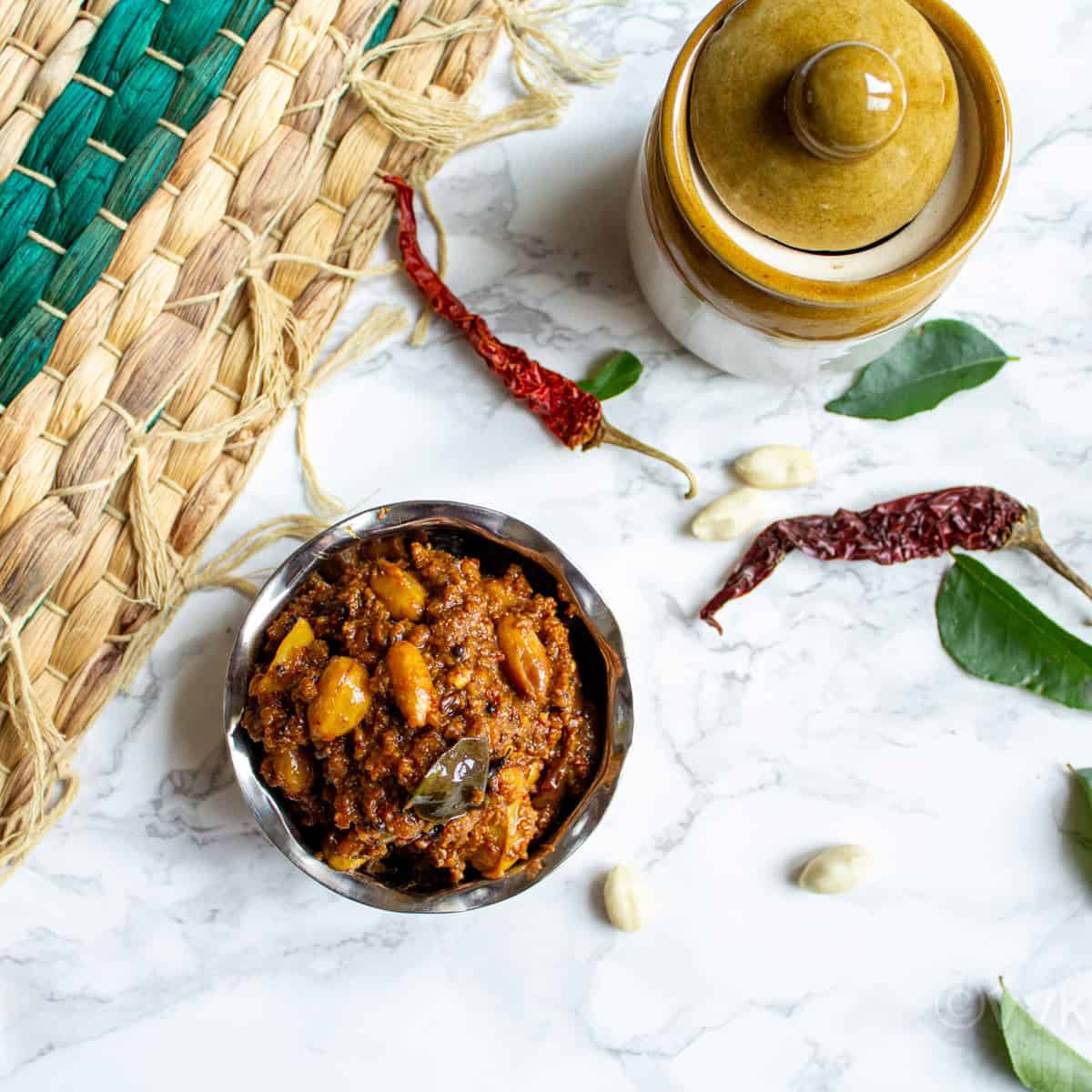
Ingredients required
Tamarind: It’s the key ingredient in the recipe. We need a small lemon-sized tamarind flesh or 1 to 1.5 tbsps of tamarind paste.
To roast and grind: We need coriander seeds, chana dal (split Bengal gram), dried red chilies, and sesame seeds.
To temper: We need gingelly oil for tempering, and we temper mustard seeds, chana dal, urad dal, fenugreek seeds, dried red chilies, peanuts, and curry leaves—also a generous pinch of asafoetida and turmeric powder.
Other ingredients: We need jaggery to balance the flavors, and I also add some rasam powder for added flavor, which is optional. Of course, we need salt and water to soak the tamarind.
Please check the recipe card for detailed measurements.
Dietary specifications and storage specifications
This tamarind rice paste is vegan. You can use gluten-free asafoetida for a gluten-free recipe. Peanuts are part and parcel of pulikachal, but if you are allergic to nuts, you can skip the peanuts, and for texture and crunch, you can add brown chickpeas, cooked.
Once the tamarind rice paste has cooled down, store it in an air-tight container and refrigerate it. It stays good for 7 to 10 days, making it a perfect make-ahead recipe.
How to make pulikachal
Soak the tamarind and roast and prepare the spice powder.
- If you are using tamarind flesh, soak the tamarind in water for at least one hour and extract the thick juice. If using a paste, then mix the paste in 2 cups of water and set aside.
- Take a heavy-bottomed vessel or kadai and roast the coriander seeds, red chilies, and chana dal without oil until fragrant over medium heat. Reduce the heat to low, add the sesame seeds roast for a minute, and turn off the heat.
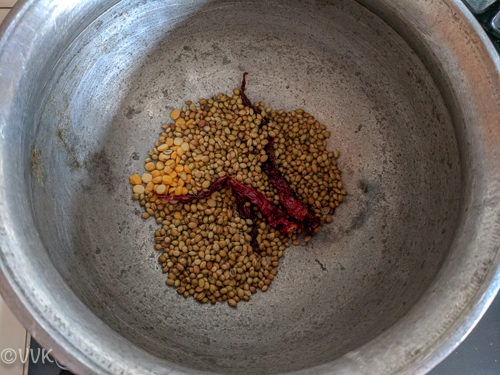
- Let the sesame seeds pop in the residual heat. We don’t need to roast the sesame seeds for too long.
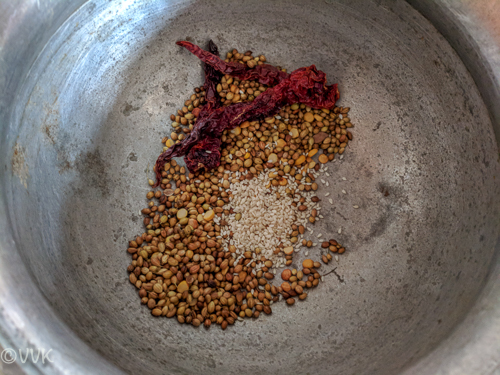
- Allow it to cool.
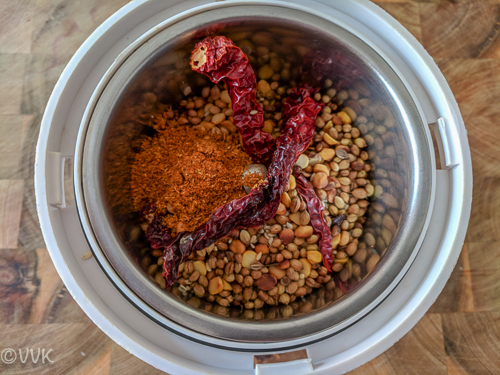
- Grind the roasted spices and rasam powder without adding water.
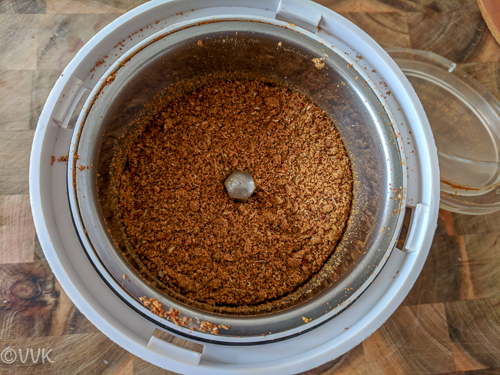
Prepare the pulikachal
- In the same kadai/heavy-bottomed pan, add the gingelly oil.
- Add mustard seeds, chana dal, urad dal, fenugreek, curry leaves, and red chilies when the oil is hot.
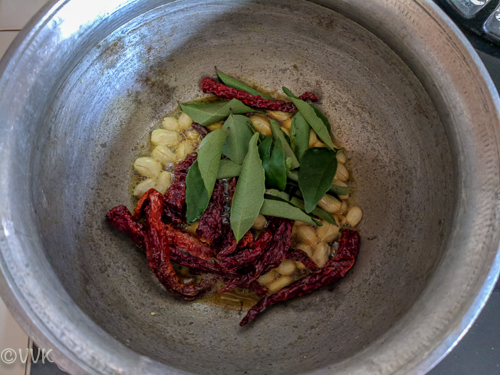
- Sesame oil becomes frothy after adding the mustard seeds, which is normal. After a couple of minutes, add the peanuts, turmeric powder and hing. Allow the peanuts to turn golden brown.
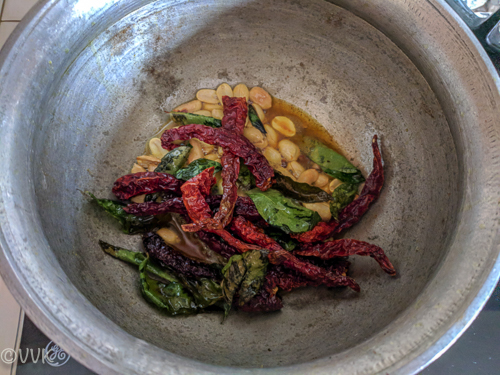
- Reduce the heat to low and carefully add the tamarind extract and salt.
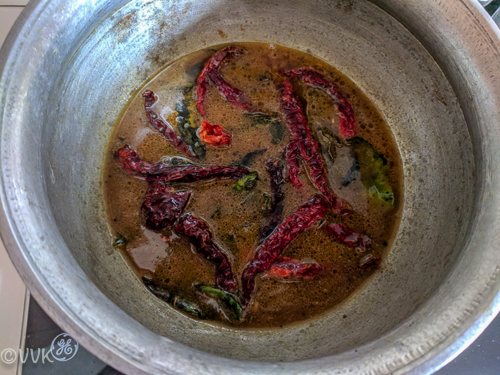
- Let it simmer for five minutes or until the raw smell of tamarind is gone.
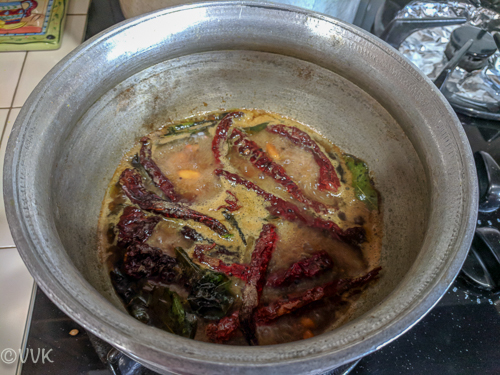
- After that, add the prepared spice powder and the jaggery and allow it to cook well over a low flame till oil separates from the mixture.
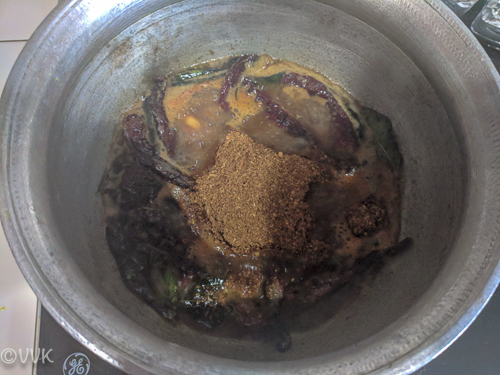
- Ensure you stir the mix every two minutes. It usually takes about 7 to 10 minutes over low heat.
- Turn off the heat and allow it to cool. Store it in an air-tight container.
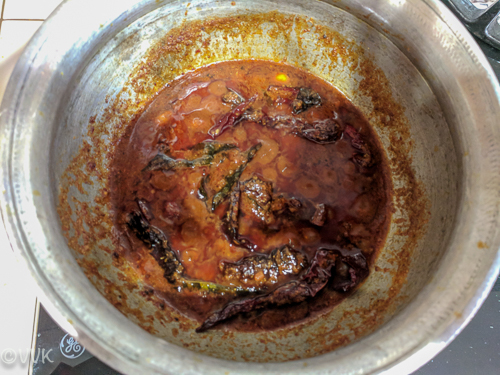
Check out my tamarind rice recipe post to learn how to use this gojju/pulikachal to make the tamarind rice.
VVK Tips & Recipe Notes:
- Adding rasam powder is optional. But it adds a great flavor.
- You can also add ¼ tsp of fenugreek powder towards the end.
- Use 1.5 tsp to 2 tsps of salt while preparing the gojju; basically, go with the minimal amount; if required, add it while mixing it with rice. Do not add salt to the cooked pulikachal, as it doesn’t gel properly. If you want to add salt, mix it with two to three tbsps of water, add it to the gojju, and heat it over a low flame.
- The age of the tamarind and the tamarind variety play a significant role in this recipe. Adjust the salt, spice, and jaggery amount depending on the sourness.
- Do not cook pulikaichal over high heat. Also, keep mixing the paste after adding the dry powder.
- I recommend gingelly oil for this recipe, but you can use any neutral taste oil.
- Dried red chilies – If you notice, I have used three dried red chilies for the spice powder and about ten whole dried red chilies while tempering. For a spicy version, add up to 5 red chilies while making the spice mix and five broken red chilies or whole while tempering. I used byadgi variety of chilies for this recipe, and they weren’t super spicy, so this measure worked fine. But depending upon the dried red chili variety you are using, adjust the measure.
- Add ½ tsp of whole pepper with dried red chilies for added flavor.
- The color of the pulikachal depends on the tamarind or red chili variety you are using and, of course, on white or black sesame seeds.

Explore other “variety rice” recipes
PS: Follow me on Instagram or Pinterest, or sign up for my newsletter for more gardening and recipe updates. If you try this pulikaichal recipe, please don’t forget to comment and rate it. Please comment if you have any questions, and I will get to it ASAP.
📖 Recipe
Pulikachal | Tamarind Rice Paste | Puliyodharai Gojju
Ingredients
Measurement Details: 1 cup=240 ml; 1 tbsp = 15ml; 1 tsp = 5ml;
- 1.5 tbsp tamarind paste small lemon-sized tamarind flesh
- 2 cups of water
To roast and grind
- 3 tbsp coriander seeds
- 1 tbsp chana dal
- 3 dried chilies; refer to notes
- 1 tsp black or white sesame seeds
To temper
- 3 tbsp gingelly oil
- 1 tsp mustard seeds
- 1 tsp urad dal
- 1 tsp chana dal
- ½ tsp fenugreek seeds
- 3 tbsp peanuts
- 10 dried red chilies
- ½ tsp turmeric powder
- ¼ tsp asafoetida
- 1 tsp jaggery
- 1 tsp rasam powder
- 2 tsp salt or to taste
- 10 curry leaves
Instructions
Soak the tamarind and roast and prepare the spice powder.
- If you are using tamarind flesh, soak the tamarind in water for at least one hour and extract the thick juice. If using a paste, then mix the paste in 2 cups of water and set aside.
- Take a heavy-bottomed vessel or kadai and roast the coriander seeds, red chilies, and chana dal without oil until fragrant over medium heat. Reduce the heat to low, add the sesame seeds roast for a minute, and turn off the heat.
- Let the sesame seeds pop in the residual heat. We don’t need to roast the sesame seeds for too long.
- Allow it to cool, and grind the roasted spices and rasam powder without adding water.
Prepare the pulikachal
- In the same kadai/heavy-bottomed pan, add the gingelly oil.
- Add mustard seeds, chana dal, urad dal, fenugreek, curry leaves, and red chilies when the oil is hot.
- Sesame oil becomes frothy after adding the mustard seeds, which is normal. After a couple of minutes, add the peanuts, turmeric powder and hing. Allow the peanuts to turn golden brown.
- Reduce the heat to low and carefully add the tamarind extract and salt.
- Let it simmer for five minutes or until the raw smell of tamarind is gone.
- After that, add the prepared spice powder and the jaggery and allow it to cook well over a low flame till oil separates from the mixture.
- Ensure you stir the mix every two minutes. It usually takes about 7 to 10 minutes over low heat.
- Turn off the heat and allow it to cool. Store it in an air-tight container.
Notes
- Adding rasam powder is optional. But it adds a great flavor.
- You can also add ¼ tsp of fenugreek powder towards the end.
- Use 1.5 tsp to 2 tsps of salt while preparing the gojju; basically, go with the minimal amount; if required, add it while mixing it with rice. Do not add salt to the cooked pulikachal, as it doesn’t gel properly. If you want to add salt, mix it with two to three tbsps of water, add it to the gojju, and heat it over a low flame.
- The age of the tamarind and the tamarind variety play a significant role in this recipe. Adjust the salt, spice, and jaggery amount depending on the sourness.
- Do not cook pulikaichal over high heat. Also, keep mixing the paste after adding the dry powder.
- I recommend gingelly oil for this recipe, but you can use any neutral taste oil.
- Dried red chilies – If you notice, I have used three dried red chilies for the spice powder and about ten whole dried red chilies while tempering. For a spicy version, add up to 5 red chilies while making the spice mix and five broken red chilies or whole while tempering. I used byadgi variety of chilies for this recipe, and they weren’t super spicy, so this measure worked fine. But depending upon the dried red chili variety you are using, adjust the measure.
- Add ½ tsp of whole pepper with dried red chilies for added flavor.
- The color of the pulikachal depends on the tamarind or red chili variety you are using and, of course, on white or black sesame seeds.
Nutrition
I am not a nutritionist. The nutritional information is provided as a courtesy and is an estimate only. It varies depending upon the product types or brands.
Update Notes: I originally posted this recipe in 2012, but now I have updated it with new pictures, more details (VVK Tips), and a recipe card.


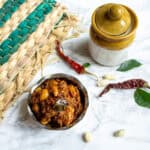
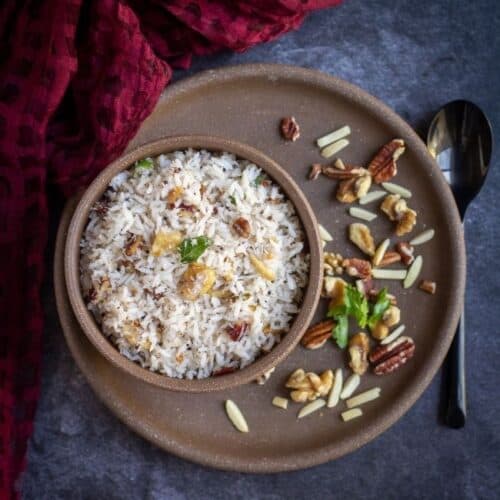
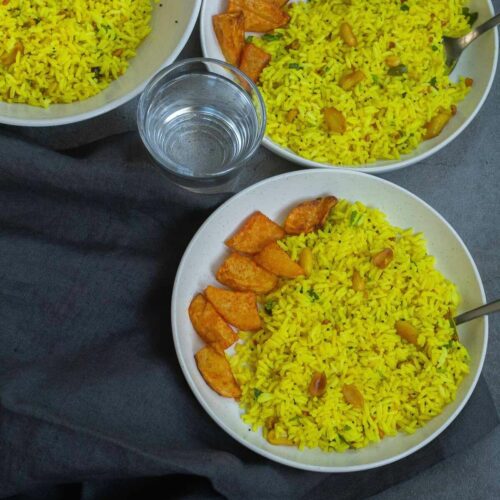
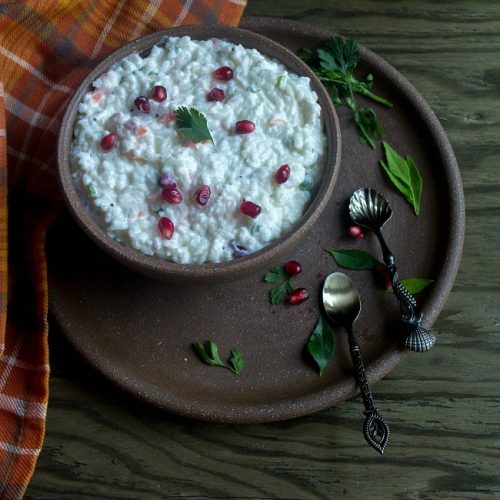
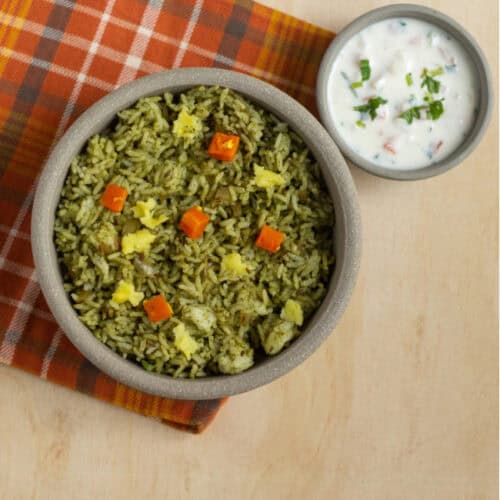

Leave a Reply